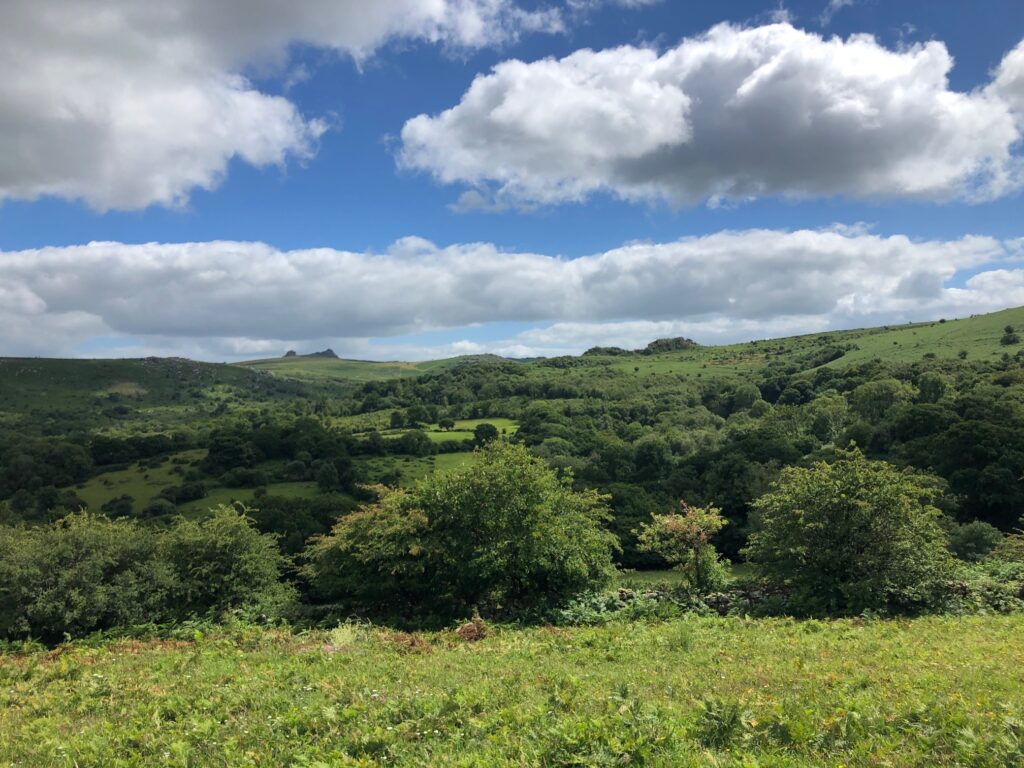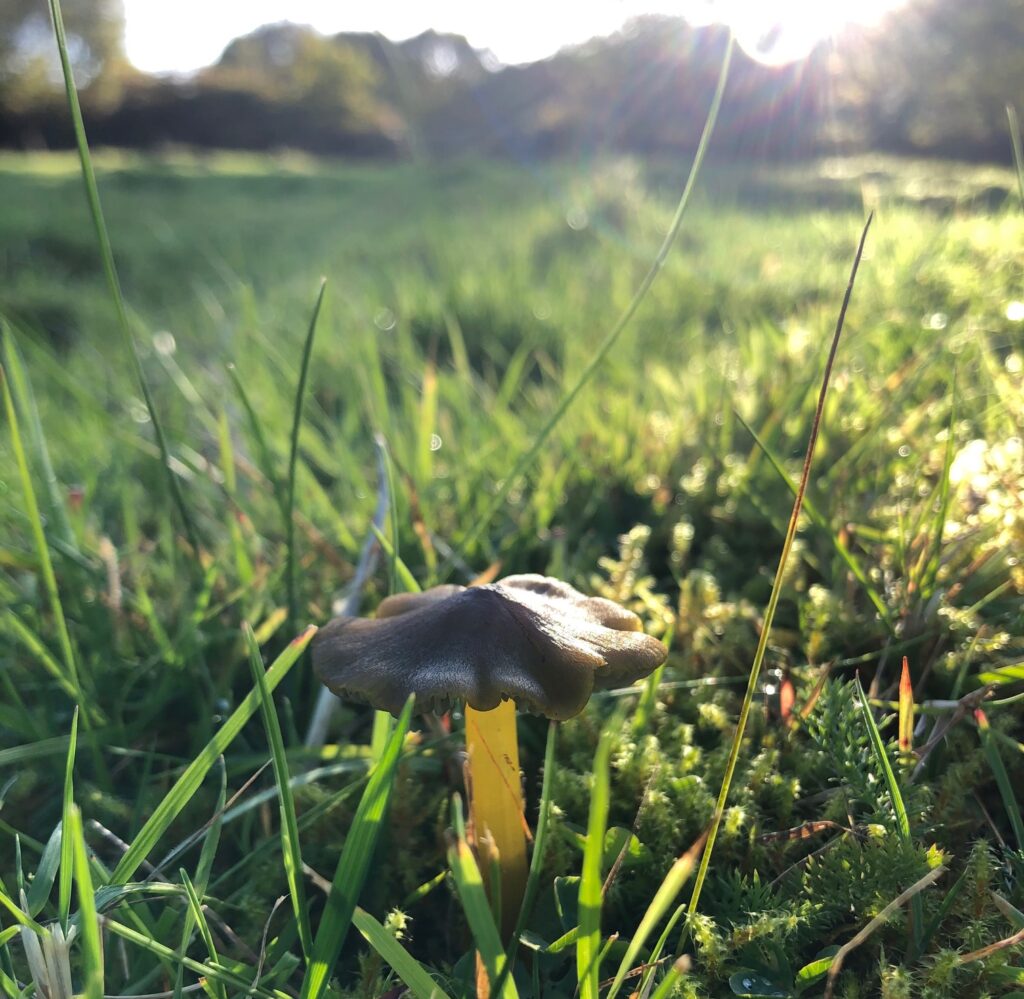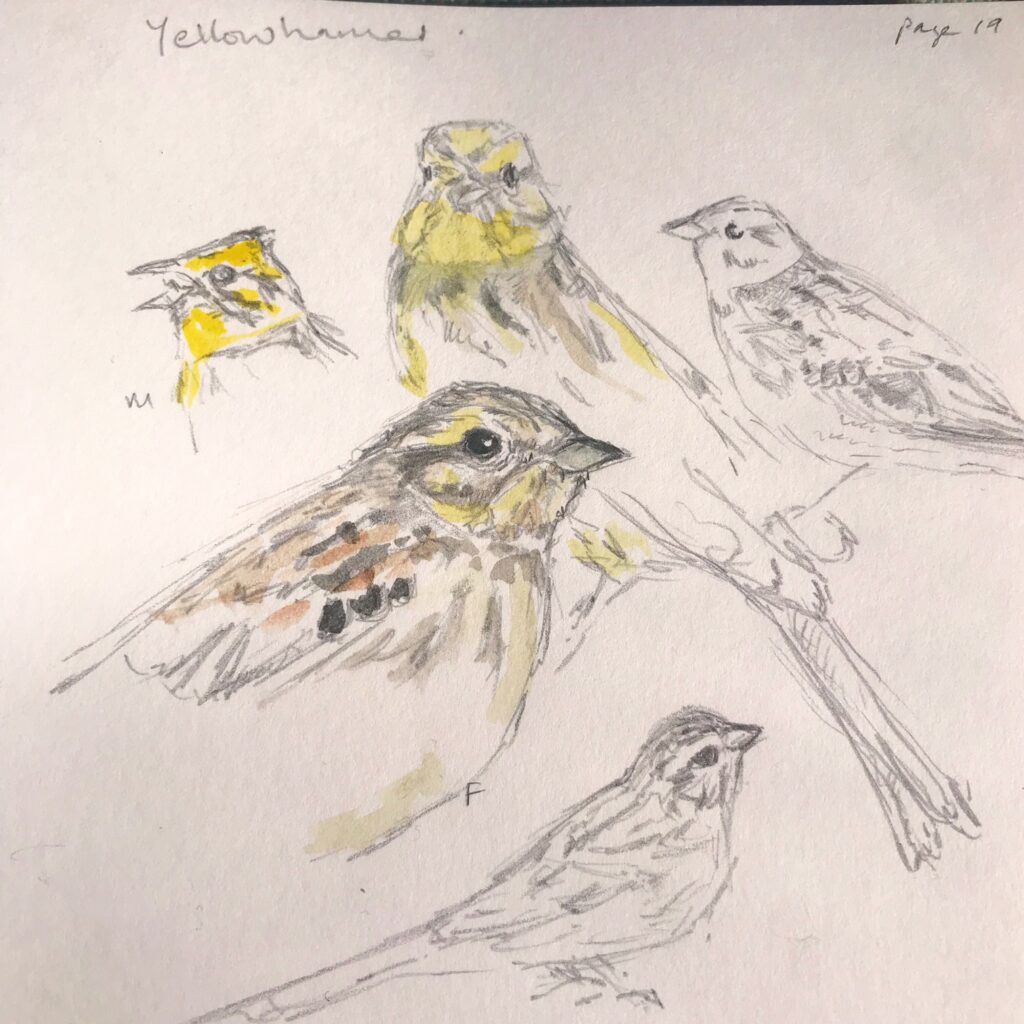Pasture Champions: Cat Frampton, Dartmoor Farmer 2/2
What do you do to encourage this biodiversity and what are the lessons you've learned and would like to share?
We started farming with and not against nature, when we made a simple decision not to cut the marsh thistles in our boggy bits of land.
We were trying and failing to farm conventionally and just ran out of time to do it all, so stopped killing some thistles, and suddenly we had more goldfinches. A small charm of them flew up from one field and it was such a joyous sight that it set us thinking.
We started looking at the things we did and how we could change them.
Less worming meant more beetles which in turn meant more birds and less need to harrow the fields after the cows had been in them because there were no more sour patches of dead dung but instead the pats all opened up and spread about for us by the birds.
 Dartmoor
Dartmoor
Cutting back on fertilisers over a number of years was easy - it cost so much and seemed to do so little, so that was stopped.
We stopped using weedkillers after spraying some weeds in the old orchard and finding the honey bees had died not long after. Yes correlation is not causation, but still, it made us think!
We stopped fretting over the docks and instead saw how the newly lambed ewes sought them out for their minerals. And how as the soil improved, they retreated to the most flash flooded bit of land instead of all the gateways.
And then we noticed just how alive the farm was. How the number of birds and plant species grew, how we noticed more fungi and how well the animals looked.
 Funghi
Funghi
How it is connected across the farm and beyond?
Our farm is lucky. It’s in a scruffy farm area, where cuckoos still breed. We have a massive woodland corridor down the valley that extends for miles. We also have many other farmers and landowners in the area that are concerned about the same things. We have a fighting chance on Dartmoor to turn the tide.
What are the benefits to the farm?
The main benefits to the farm, other than the happiness of the farmer, lies in cost.
Using no fertilisers and still being able to grow feed for our stock, using less of the expensive wormers and no weedkillers means our overheads are lower.
We still buy in hay, but no longer feed bag after bag of cattle concentrate, so that’s a lot cheaper too.
We found that during the dry spell of 2017, when a lot of our neighbours were forced to feed hay in the summer, we still had grass although leaving long grass behind the cows was a change of mindset we found tricky at first.
As a result, we feel we’re a tiny bit more resilient and can cut our overheads at the same time, while still growing very tasty meat.
How do you monitor it?
I have a few monitoring methods. Firstly, there is my art. As silly as that sounds, a sketchbook full of drawings of all the birds we see here has helped me understand the bird population on the farm.
 Monitoring through art
Monitoring through art
In a more scientific manner, I have mapped the habitats of the farm and I keep records of the plant species of each field.
I use a simple app to identify both the plants and fungi I see - ‘Picture This’ for plants and ‘Picture Mushrooms’ for the fungi. I have a couple of new friends on social media who help me identify insects, moths and butterflies. ‘Dung Beetles for Farmers’ have a great resource for identifying dung beetles.
What lessons have you learnt and would like to share with others?
Just trust in the land’s ability to fix itself. Listen to as many experts and indigenous farmers and growers as possible, especially from areas of the world that already deal with extremes of weather!
Listen less to those with tidy farms of a uniform green. Give it a chance and it will spring back!



